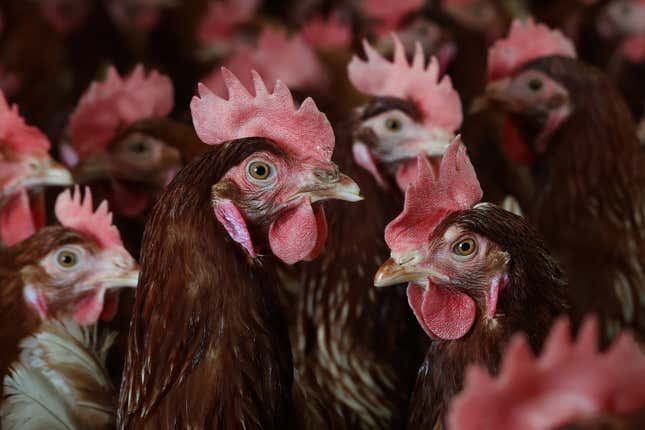
In This Story
After egg prices hit a record high last month, the Trump administration is finally rolling out its plan to “make eggs affordable again.”
U.S. Agriculture Secretary Brooke L. Rollins announced the initiative Wednesday in an op-ed for The Wall Street Journal, disclosing that her department will invest up to $1 billion to help bring prices down.
She laid out the administration’s five-point plan to tackle the crisis, which she blamed “in part to continuing outbreaks of highly pathogenic avian influenza, which has devastated American poultry farmers and slashed the egg supply over the past two years.”
The op-ed came just a day after the USDA projected egg prices will jump 41.1% this year. Earlier this month, the Bureau of Labor Statistics reported that the price of a dozen large Grade A eggs hit a record $4.95 in January, almost doubling from $2.52 a year ago.
What’s driving the egg crisis?
The main culprit behind soaring prices is the shrinking population of egg-laying hens due to the ongoing bird flu outbreak.
Since 2022, more than 166 million birds, including commercial poultry, have been infected with the bird flu, according to the U.S. Centers for Disease Control and Prevention (CDC). The USDA reported this month that the country’s egg production fell 4% in January and the population of all egg-laying poultry fell 5% from last year.
The Trump administration’s plan to “make eggs affordable again”
The USDA’s investment will be will be divided into three key areas:
- Up to $500 million to help poultry producers improve their biosecurity measures.
- Up to $400 million as financial relief to farmers affected by the outbreak and to help them resume operations.
- Up to $100 million to develop vaccines and treatments for bird flu, aiming to reduce the need to cull infected flocks.
While the USDA has yet to fully approve a vaccine, it recently granted a conditional license for an inoculation.
The administration’s five-point plan also includes rolling back some regulations — such as on space requirements for hens — to help lower production costs. Officials are also considering temporary egg imports to boost supply.
“This five-point strategy won’t erase the problem overnight, but we’re confident that it will restore stability to the egg market over the next three to six months,” Rollins wrote.